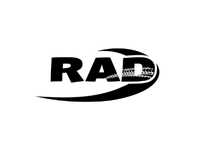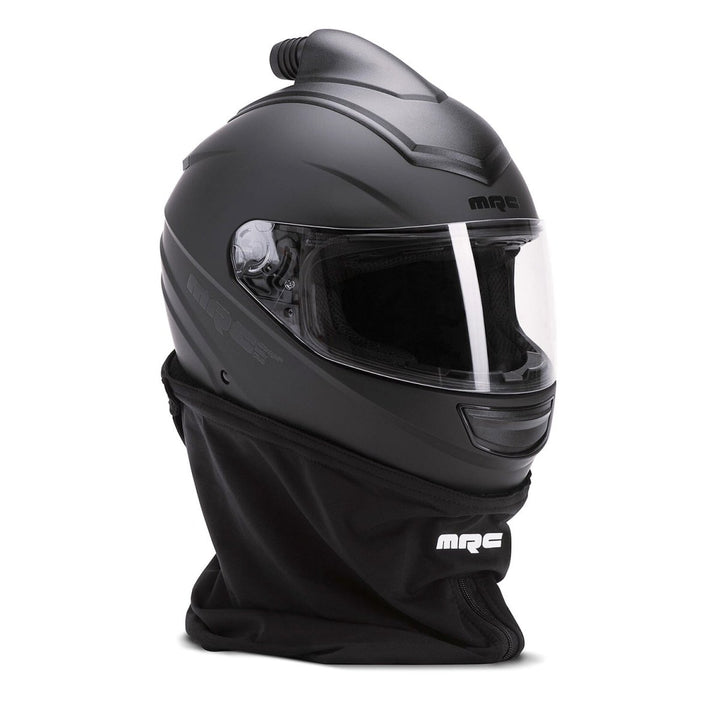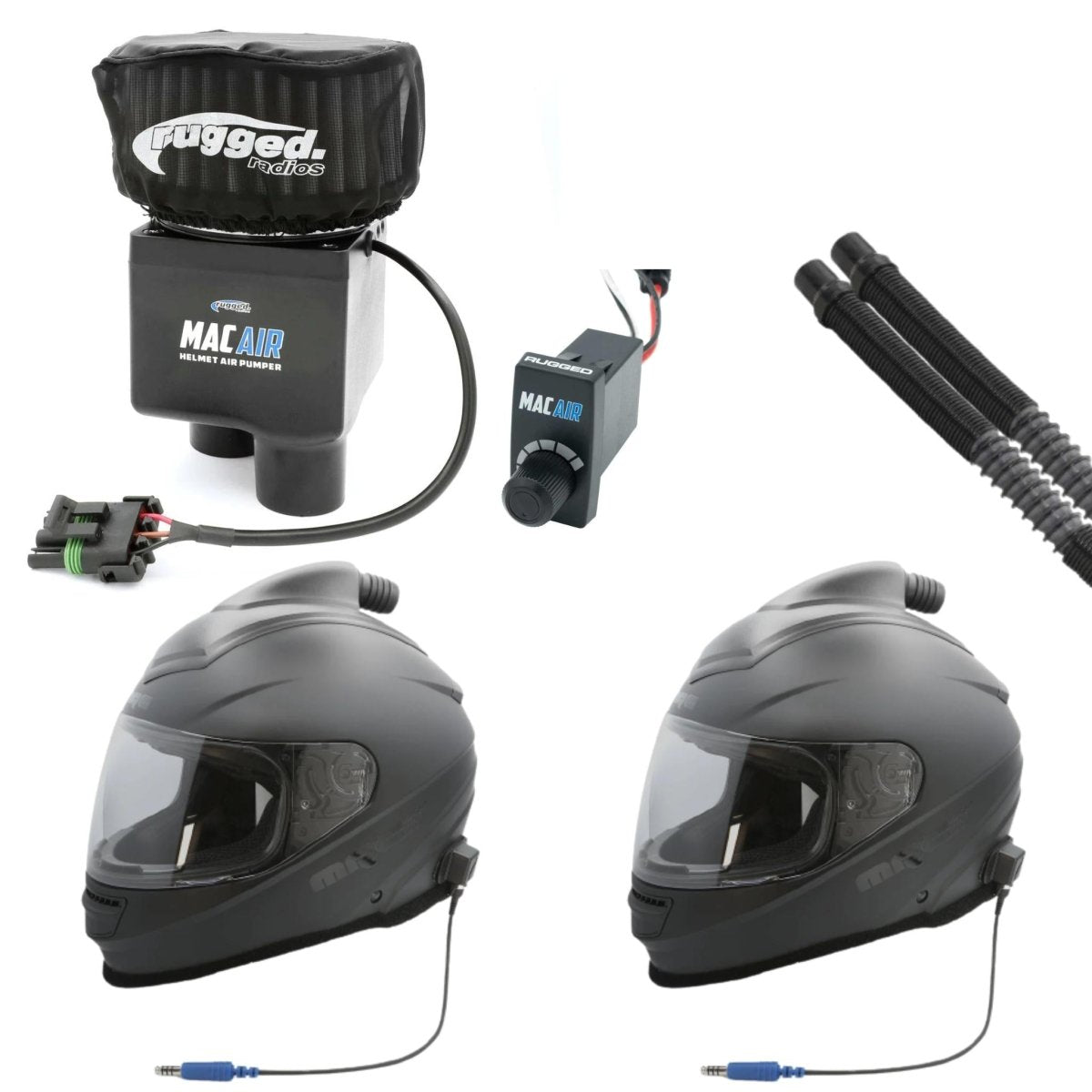Forced Air Helmets: Enhancing UTV Comfort and Safety
UTV riding is a thrilling activity that require a high level of safety equipment to protect riders from the inherent risks of the road and racetrack. Helmets have always been at the core of this protective gear, evolving over the years to incorporate advanced materials and designs. Among these innovations, the forced air helmet is a specialized type that provides not only protection but also increased comfort for riders in demanding environments.
Forced air helmets are equipped with an air management system that directs filtered, fresh air into the helmet. This is particularly useful in off-road racing, such as desert rallies or endurance events, where dust and heat can create oppressive conditions for the rider. The continuous flow of air helps to keep the rider's head cool and reduces the buildup of heat inside the helmet, which can otherwise lead to discomfort and decreased concentration.
When considering a forced air helmet, attention should be given to the helmet's compatibility with various air pump systems, the quality of filtration, and how well the helmet seals against dust and dirt. Fit and comfort remain crucial, as the benefits of forced airflow would be negated if the helmet is ill-fitting or causes any distraction to the rider. The ability to integrate communication systems may also be a priority for team events or rides that require coordination.
The choice of a forced air helmet can make a significant difference in a rider's performance and endurance. As we guide you through the next section, we'll explore the key features and designs that stand out in the latest models, and how they meet the needs of different riding conditions.
Top Forced Air Helmets
After extensive research and testing, we've compiled a list of the best forced air helmets available in the market. Our selections are based on their comfort, durability, ventilation, and overall safety features to ensure you're equipped with a quality helmet whether you're racing or engaging in any motorsport activity. Each product we've chosen stands out for its ability to provide superior head protection while maintaining a comfortable fit and clear vision, making your experience both safe and enjoyable.
Bell Qualifier Helmet
We think the Bell Qualifier Forced Air Helmet is a solid choice for off-road enthusiasts seeking a blend of comfort and dust protection.
Pros
- Incorporates a large forced-air vent, compatible with fresh air systems to keep your head cool.
- Features a lightweight design with a five-year warranty for peace of mind.
- Equipped with a dual-layer shield to enhance visibility and shield against UV rays.
Cons
- Some riders might find the fit to be snug; it's crucial to check the size chart before purchasing.
- Airflow may be insufficient unless paired with a high-output air pumper.
- There are reports of the seal not being completely dustproof, which could be a problem in heavy dust conditions.
Bell's Qualifier Forced Air Off-Road Helmet integrates top-tier ventilation technology, which is a boon for riders using fresh air systems. Its lightweight construction aims to reduce fatigue during long riding sessions, making it less cumbersome than many alternatives. The NutraFog II shield adds value by providing clear sight through various conditions, which is a significant advantage when navigating the outdoors.
We appreciate the attention to noise reduction, courtesy of the padded wind collar, and the removable interior lining that emphasizes hygiene and comfort. Riders' experiences suggest that the dust skirt positively impacts the overall off-road experience by minimizing the intrusion of dust particles.
However, it's worth noting concerns regarding the fit, which underscores the importance of verifying measurements before making a purchase. Some feedback has pointed out the potential weak airflow without a potent air pumper system, which could affect comfort and fogging under certain circumstances. Additionally, despite the helmet's commitment to keep dust out, some riders may still face challenges in exceptionally dusty environments.
In summary, the Bell Qualifier Helmet presents as a dependable piece of gear for your off-road adventures. Its strengths in comfort and protective features make it an attractive option, while the few downsides highlight the need to assess personal fit and ventilation needs.
MRC Stage One Helmet Wired by Rugged Radios
If you're into off-road adventures, our take is the MRC Stage One Helmet is a solid choice for combining comfort and dust management.
Pros
- Enhanced clearance with Mid-Air inlet
- Removable high-quality dust skirt
- Efficient top forced air inlet
- Included Rugged Radios Pre Wired Helmet Kit
- Available Photo-chromatic (Transition Shield)
Cons
- Limited review for newer brand
For die-hard trailblazers, the top forced air inlet is a breath of fresh air, literally. Keeping cool is crucial, and this feature targets that need effectively. The Mid-Air inlet offers another advantage — additional headroom — which is particularly valuable in cramped vehicle cabins.
Dust can ruin any good rally run, but the MRC Stage One combats this with its removable dust skirt. It's a barrier you'll appreciate when the terrain gets challenging. Plus, the convenience of removing the skirt makes it versatile for different conditions.
The quality of the adjustable 180-degree visor also stands out. It provides the necessary protection and flexibility you need when tackling the varied lighting conditions of the open trail. However, while these features set the MRC Stage One apart, ensure you check compatibility with your existing gear.
We note the helmet's ranking is lower on the best-seller list, potentially indicating less market traction, which might give some buyers pause.
Lastly, for those with smaller head sizes, it's essential to measure accurately, given the helmet sizes span from 3XL to 4XL. This range may not suit everyone's needs, yet the inclusion of different padding sets seeks to address fitment concerns.
RaceQuip Top Air Helmet
We believe this helmet is a solid choice for racing enthusiasts seeking a balance between safety and comfort.
Pros
- Snell SA2020 rated for top-notch safety standards.
- Features an advanced cooling system to reduce fog and heat.
- Equipped with a Nomex interior for a comfortable fit.
Cons
- Some users find the forehead area too tight.
- Limited total reviews may not fully represent user experiences.
- May require fine-tuning for the padding to suit individual preferences.
Racing necessitates a high level of safety, and with the RaceQuip Top Air Helmet, you're getting just that. The Snell SA2020 rating assures you of its protective capabilities, meeting rigorous standards for motorsport safety gear. Its advanced cooling design is constructed to channel airflow effectively, ensuring the visor remains fog-free and the wearer's head stays cool under the heat of competition.
Comfort is crucial during long races, and this helmet aims to provide it. The interior blends Nomex fabric, known for its fire-resistant properties and comfortable texture, assisting in keeping the wearer comfy and focused. Its clear 3mm polycarbonate faceshield promises an unobstructed view of the track, affording great peripheral vision essential for both performance and safety.
However, it's important to bear in mind that some users report snugness around the forehead area, which might necessitate some adjustment for an optimal fit. And while feedback is generally positive, the limited number of reviews on this product means we have a smaller pool of experiences to gauge its overall performance. Prospective buyers may need to adjust the cheek pads to match their facial structure closely.
The helmet's aerodynamic design with a chin spoiler can reduce drag, making it a potentially valuable addition to a racer's gear. For individuals searching for a racing helmet that addresses safety, visibility, and comfort with a professional look, the RaceQuip Top Air Helmet is worth considering.
KLIM R1 Air Helmet
If you're into snowmobiling and require a reliable helmet, the KLIM R1 Air could potentially meet your demands with its robust build and decent ventilation.
Pros
- Enhanced air circulation for comfort
- Matte black finish for aesthetics
- Positive reception from the snowmobile community
Cons
- Weighs a bit more than some alternatives
- Matte finish may show wear over time
- Some reports of customer service issues
We've looked into the KLIM R1 Air Helmet and it stands out with its ample airflow, a critical feature for those long rides where comfort equates to extended performance. Its rally matte black design exudes a sleek vibe that's both stylish and functional. Recognized for its fit and comfort, it's been popular among enthusiasts for the breathability it offers when connected to a forced air pumper system.
Yet, every rose has its thorns. The helmet's 5.3 pounds of heft might be noticeable for some, potentially leading to strain on extended rides. A matte finish, while stylish, might not hide the scars of frequent use, betraying its age with marks and scratches. Furthermore, customer feedback has pointed to cases of less than stellar service, which could mar an otherwise satisfactory post-purchase experience.
Despite these concerns, user reviews generally reflect satisfaction, with remarks on both its effectiveness in air delivery and the comfort it provides. It's important to weigh these advantages against the drawbacks before making a decision. The mixed reviews suggest an overall confidence in the product, with a few aspects to consider based on individual preferences and priorities.
MRC Stage One Side Air With Pumper Kit
Buying Guide
Understanding Your Needs
Before purchasing a forced air helmet, we should first evaluate the environment in which it will be used. For racing applications, heat resistance and communication setups are crucial. For industrial use, durability and protection level are top priorities. At Rad UTV Parts We Carry complete air pumper kits
Helmet Size and Fit
It's essential to get the right size for maximum comfort and safety. We can measure our head circumference and compare it against the manufacturer's sizing chart to find the best fit.
Ventilation System
A robust ventilation system is key to prevent fogging and maintain clear visibility. Look for options with adjustable airflow features to customize the ventilation based on our needs.
Visor Quality
We must ensure the visor is made of high-impact materials and offers a clear field of view. Anti-scratch and anti-fog coatings are beneficial characteristics to consider.
Certification and Safety Standards
Safety certification, such as Snell or DOT, indicates the helmet meets specific safety standards. We must check for these certifications to ensure a baseline of protection.
Communication Systems
If we need to stay connected with a team, looking for helmets that can integrate communication devices is important. Noise-canceling features may be important for clear audio.
Price Point
While we should not compromise on safety for cost, it's essential to find a helmet that fits within our budget. Price can be influenced by brand reputation, materials used, and additional features.
Here's a simple table to help summarize the key points we should look for:
| Feature | Why It's Important |
|---|---|
| Size & Fit | Comfort and safety depend on it. |
| Ventilation | Clear vision and comfort. |
| Visor Quality | Durability and visibility. |
| Safety Certifications | Ensures minimum safety standards. |
| Communication Systems | Essential for team coordination. |
| Price | Must align with our budget. |
By considering these features, we can make an informed decision and choose a forced air helmet that meets our specific needs without compromising on safety or comfort.





